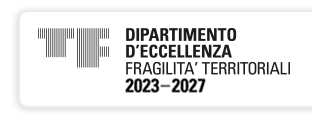
…Before the Bauhaus
04/04/2024, h. 10:00
Politecnico di Milano, Polo territoriale di Piacenza, Caserma Nave, Aula L
In search of a modern design culture and new approaches for the education of architects and artists at the beginning of the 20th century.
On the threshold of the 20th century, a multitude of different reform efforts sought to renew many areas of contemporary culture, not only in art, music, literature and theatre, but also in architecture, arts and crafts, design and urban planning. In established historiography, for the development in Germany a straight line is usually drawn from the English Arts and Crafts movement to the modern culture of the 1920s with its highlights in the exhibition at the Weissenhof and the educational programme at the Bauhaus Dessau. The real history of this development is much more complex. In addition to the English influence, movements in other countries such as the Secession in Austria, the City Beautiful movement in the USA, Art Nouveau in Belgium and France should be given equal consideration, along with others in similar countries from Scandinavia to Russia, Eastern Europe and Turkey.
As in England, the demand for improved training in the arts and crafts in Germany also began in the second half of the 19th century and led to the founding of a great number of reformed training centres from 1900 onwards, both former trade schools and art academies. The Bauhaus was not invented by Walter Gropius but had many predecessors. These deserve a closer look because they not only anticipated many characteristics of the Bauhaus, but also represented tendencies that endured alongside the Bauhaus and were of great importance for the developments of the decades following the Bauhaus.
Relatore
Hartmut Frank
Responsabile
Federico Deambrosis
federico.deambrosis@polimi.it
Locandina

DAStU - Politecnico di Milano
Department of Architecture and Urban Studies
via Bonardi, 3
20133 Milano
t +39 02 2399 5400
f +39 02 2399 5435
dastu@polimi.it






